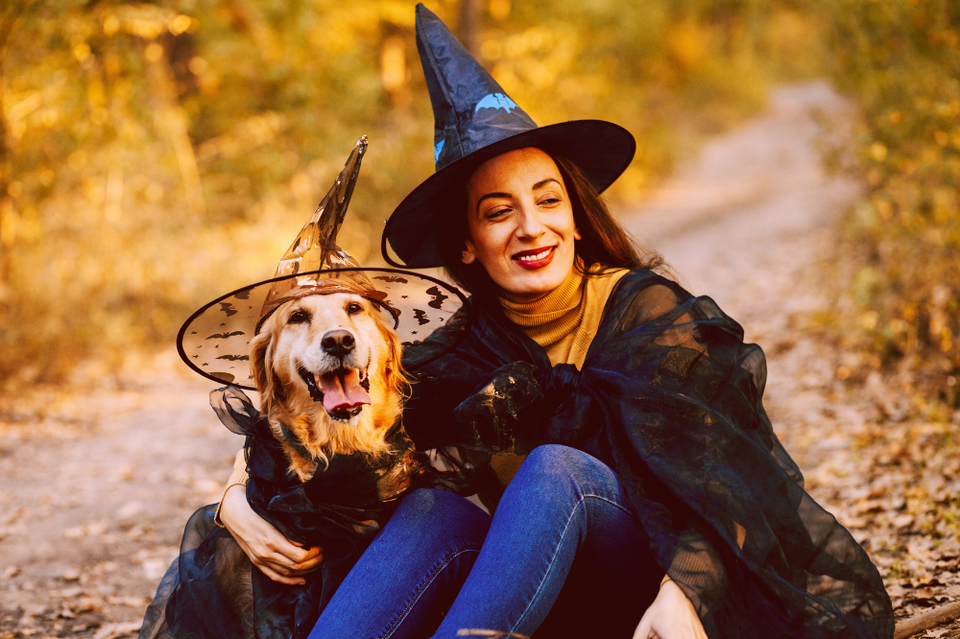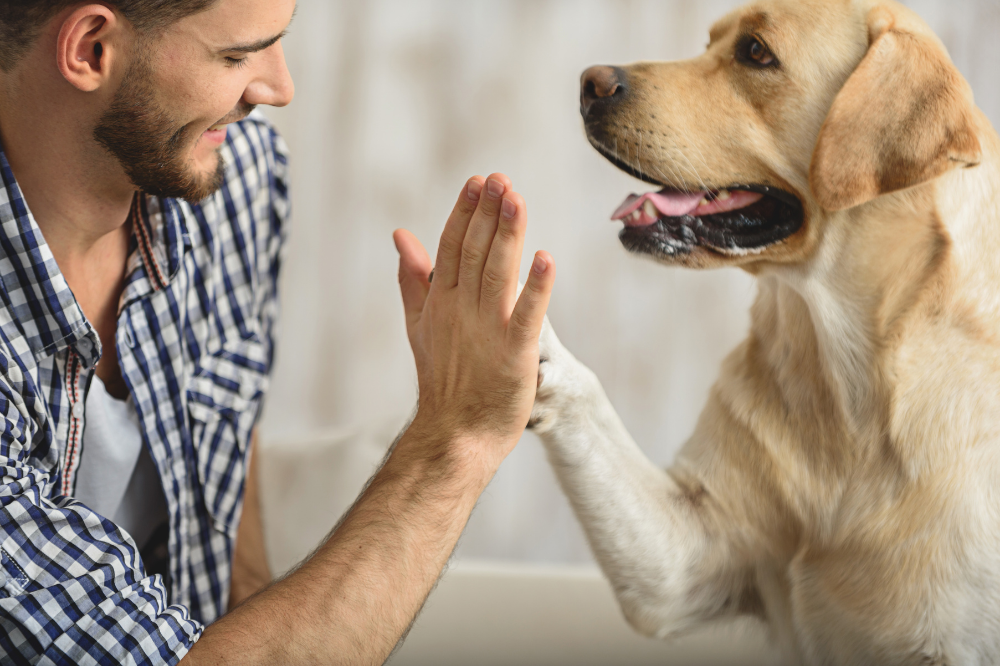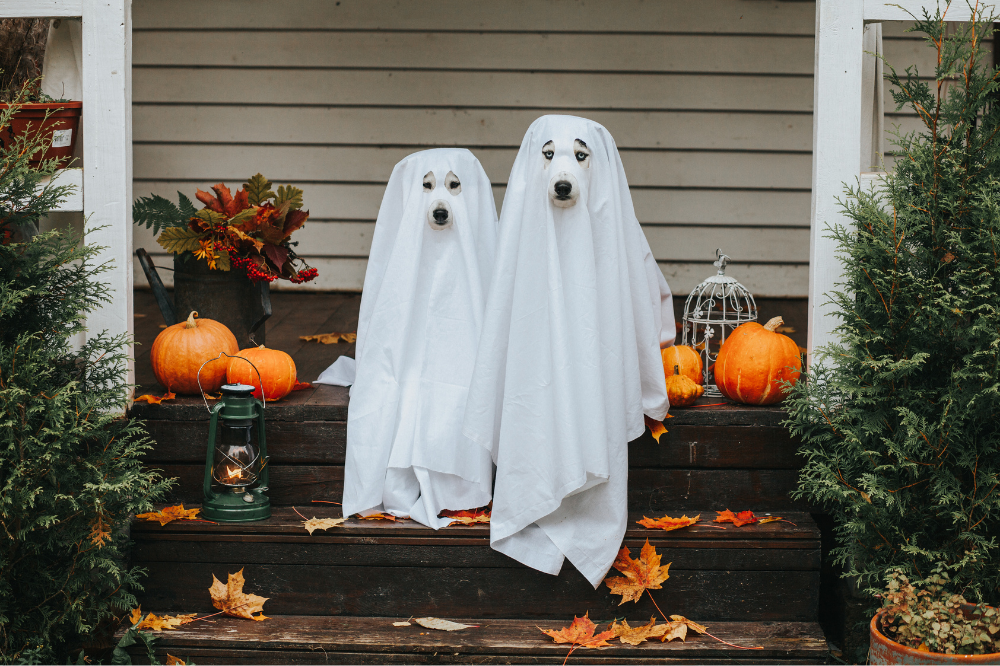
Paws Play and Cosplay

You may or may not be familiar with the term cosplay, although you’ve probably seen cosplayers in the media. While it involves costumes, though, do not mistake it for Halloween or a costume party. They are not the same.
Cosplay is defined as dressing in costume to depict a fictional character but not involved with a theatrical production, and it is frequently associated with fan conventions (aka “cons”) for anime, manga, comic books, graphic novels, etc. The term is derived from the words “costume” and “role play.”
A brief history of cosplay
The term cosplay was invented in Japan in 1984, where the word is kosupure (ko-sue-poo-ray), derived phonetically from the English words. Nowadays, cosplay is mostly associated with Japan because of its strong connection to anime and manga via comic book conventions, aka ComicCons, but it might surprise you to learn that it’s not a Japanese invention at all.
Pop quiz: When do you think the first cosplayer attended any kind of science fiction or fantasy themed con? You’re probably thinking the 1990s, or the 1980s at the earliest, but you’d be off by a few decades.
The first cosplayer in the modern sense was Myrtle R. Douglas, also known as Morojo, who dated Forrest J. Ackerman for a time. He was not only a science fiction writer and editor, but one of the most famous science fiction fanboys in history, and his collection of memorabilia was legendary.
They brought cosplay to the modern world in 1939 at a con in Los Angeles, dressed in costumes inspired by the 1936 film Things to Come. Of course, they were not the first cosplayers in human history. That had been going on since at least the 15th century with costume parties and masquerade balls — but they weren’t tied in to existing media franchises.
Why do humans cosplay?
The simple answer is the same as the explanation for a lot of human behavior. People do it for fun. There’s a reason that “play” is in the word, after all.
“Cosplay makes me happy,” New York Comic Con attendee and cosplayer Edgar Roldan told Livescience in an interview, explaining that the most satisfying part was “just being you — being whatever and whoever you want.”
There’s also the joy of the process of creating the costume — and this is another distinguishing feature of cosplay. Real cosplayers don’t get their outfits off the rack. The joy of the experience and investing emotionally in the character are what motivate them to expend the time, effort, and money necessary to get it right.
Meanwhile, you can find plenty of off-the-rack options for your pets.
Dogs and cats and costumes
Currently, there are lots of commercially made costumes available for both dogs and cats. The industry is a huge business, pulling in over $5 billion worldwide in 2020, with North America accounting for $1.7 billion of that, or 34% of the worldwide total.
In 2020, the top 3 Halloween dog costumes were pumpkin, hot dog, and super hero, and the states you’re most likely to find dogs dressed up in are North Dakota, South Dakota, Colorado, and West Virginia. (Surprisingly, California and New York don’t even make the top ten.)
Statistics on cat costumes are harder to find, with surveys being biased toward dogs, although cat costumes tend to be simpler than dog costumes.
We’ve probably all seen costumed dogs out trick or treating with their families, or marching in parades — but do our pets ever cosplay?
Dogs and cats and cosplay

So, what about actual cosplay for your pets? Does it exist? Oh, you betcha. And, just like human cosplay, these outfits don’t come off the rack, but are custom made and based on the same kinds of characters as the human versions.
It’s become very common to see people with their cosplaying fur babies at various cons, and service dogs get in on it as well. There’s Kiba, who attends cons with his human, Nicole Spickerman. He debuted at a comic con in Phoenix in 2013, and came as Link from the video game The Legend of Zelda, but he has plenty of other characters in his repertoire,
But Kiba is not the only cosplaying service dog out there.
Finally, to bring it full circle, there are humans who dress up like animals. They are known as furries and they have their own cons — but whatever you’re thinking right now, it’s probably not true. Furry fandom is pretty much the same as all the other cosplayers, except focused on anthropomorphized animals.
Are costumes and cosplay good for our pets?
Experts seem divided on whether costumes in general or cosplaying specifically are good or bad for our pets. In a recent survey of vets, one third of respondents were absolutely against pet costumes, citing painful rubbing against the skin, stress, and overheating as some of the reasons.
However, the same survey showed that almost 80% of pet parents love dressing up their fur kids in costumes.
For cats, additional reasons to not put them in costumes is that they have a strange smell (to the cat) and will also prevent the cat from being able to smell itself, which can freak them out.
Also, costumes can cause allergies or have small parts that a cat can chew off and swallow, and they may also be flammable. Finally, if your cat doesn’t like being in a costume (and few do), if you repeatedly make them do it, it can break their trust in you and damage your relationship.
Not all experts think people should never put costumes on their pets, though. For cats, if you’re considering it, check their personality first. Do they like getting attention from everyone, or are they aloof? Have they worn clothes before, like a sweater, and how did they react to it?
If your cat seems okay in both of these areas, then the things to pay attention to are how well the costume fits, and whether your cat shows signs of stress when you put it on them. These signs can include hissing or spitting, aggression, hiding more or running away, decreased appetite, or litter box “accidents” (as in not going in the box.)
Make sure that the costume does not cover the cat’s ears or eyes, touch their whiskers, or impede their ability to move. And, most importantly, introduce the costume gradually. Let your cat get used to the smell and feel of it first before trying to put it on, then start by putting it on for a few seconds right before mealtime to make the positive association.
As with cats, it’s important to prepare your dog for the costume. Watch for signs of stress in a dog when you do put it in costume. These include lip-licking, yawning, ears back or wide eyes, whiskers down, heavy panting, slinking away from you, or trying to shake the costume off.
Also let the dog become familiar with the costume by taking it out of the packaging ahead of time and leaving it some place where it will pick up your scent, like on the bed. Later, leave it where the dog can access it and let them approach and sniff it when they become curious, rewarding them when they do.
Eventually, you can start laying the costume across their back without fastening it on or putting them in it so they can get used to the feel and weight. Do this over the course of a few days. Then, when you think your dog is ready, put the costume on them but only when they seem happy and confident — as in with bright eyes and wagging tail.
The general rules are: Use a costume that is comfortable and fits properly, make sure that it doesn’t impede your pet’s movement or block their vision or hearing, make sure that it’s not flammable and doesn’t have small parts that can be chewed off, and introduce it to your pet gradually.
Decide from your pet’s reaction whether costumes are suitable for them at all.
What’s right for your pet?
Think of various times in the past that you’ve worn costumes for whatever reason — Halloween or cosplay. Now think of how comfortable you did or didn’t feel. And this can go beyond costumes — if you’ve ever had to dress up for a formal event, how comfortable was that gown or tuxedo, really? And does anyone ever actually enjoy having to wear a tie or heels?
Now multiply this by a hundred to put yourself in your pet’s paws, because they don’t even understand why they’re wearing it. Also, know your pet’s personality. Are they easygoing and good at being trained, or are they more the nervous, fearful type?
When putting a costume or any clothing on your pet, trust is of the utmost importance. It’s your responsibility to make sure that the process doesn’t make them nervous or scare them, and that they aren’t stressed out or anxious once you have the costume on them.
There are also ways to costume your pets that are far less stressful to them, and a lot of cat “costumes” already acknowledge this. Rather than a full-on outfit, you can opt for fancy collars with ruffles, wings, ears, or other decorations that will at least feel more normal to your pet or go for the bow tie or bandana look.
This will still allow you to give them a little festive touch with minimal negative impact.
The important part is being together
Whether your dog or cat takes to costumes like a seasoned trooper or freaks out if they even see you holding that sweater, it’s important to remember that the real reason we do want to put costumes on our pets is for us, not them.
Remember, they have no concept of why you’re doing it or what’s going on in the streets at Halloween, and they may have problems just dealing with all the people, noise, and excitement in the first place, so that a costume is just an unnecessary added complication.
If that’s the case, ditch the costume and let your dog focus on what’s going on out there. If that still proves to be too much, then it’s best to stay at home to do your tricks for treats with your pet.
However, if your pet does take to the costume thing, as long as they seem to be enjoying it and not suffering any rashes or allergies, then it’s okay to indulge. They might just like the attention from people and interpret the costume as affection from you.
And who knows? Your dog or cat may just become the next cosplay star at your nearest ComicCon.
Either way, happy Howlloween!
Share this article
written by


